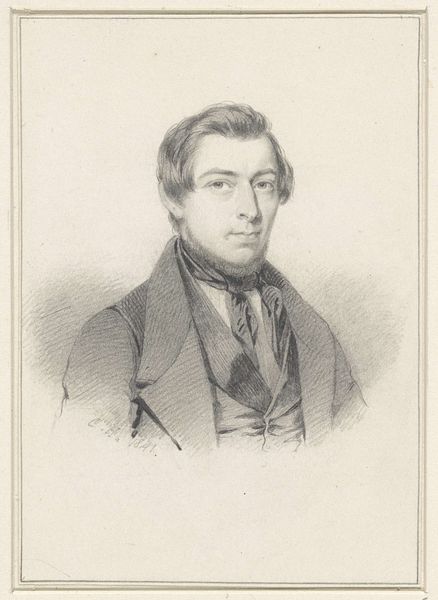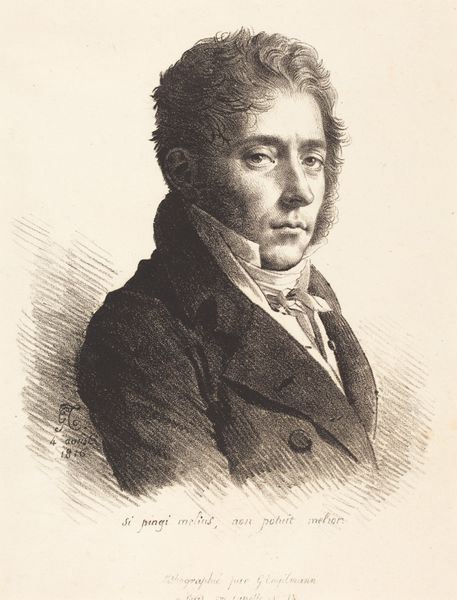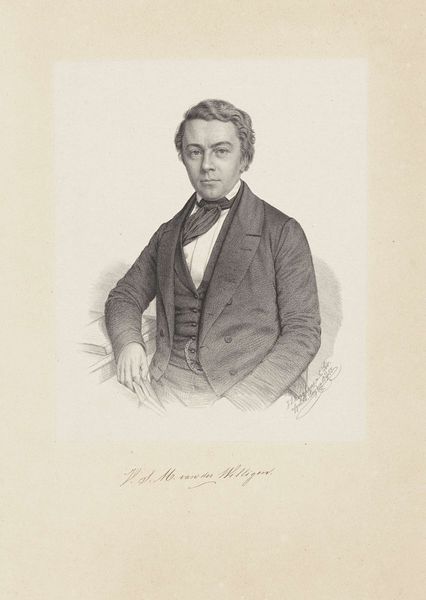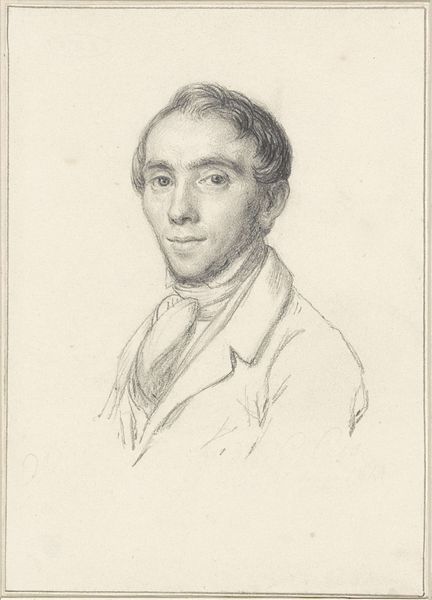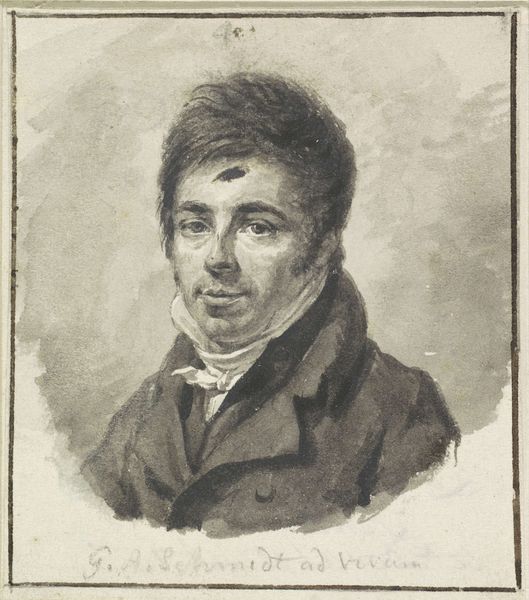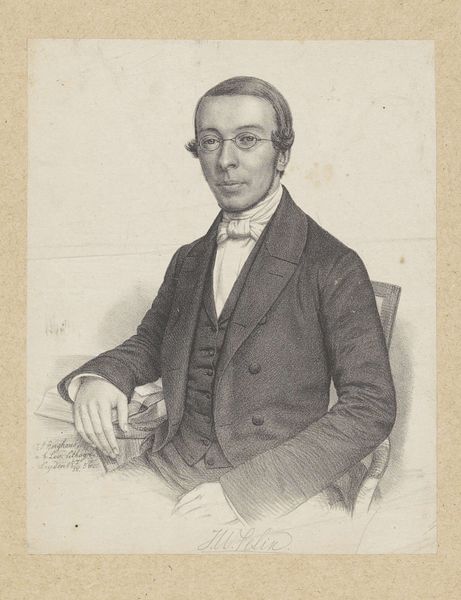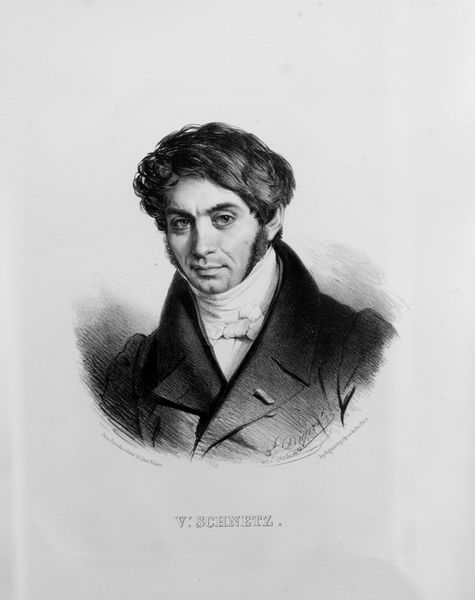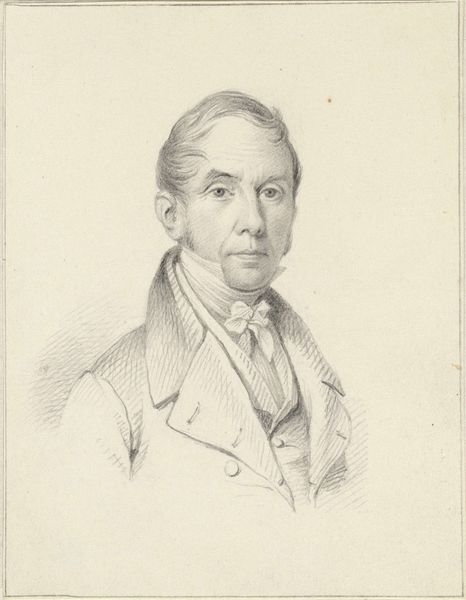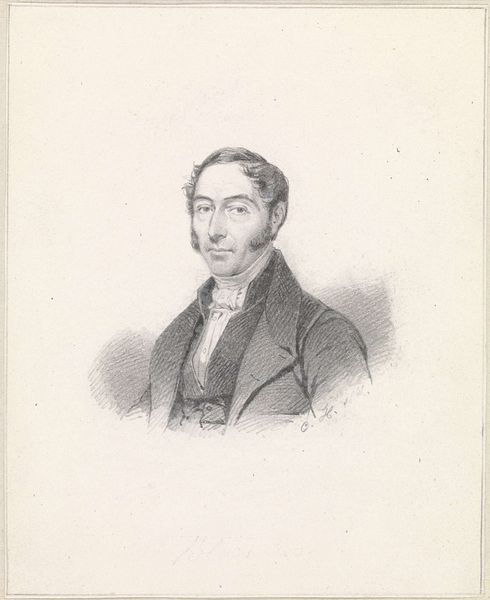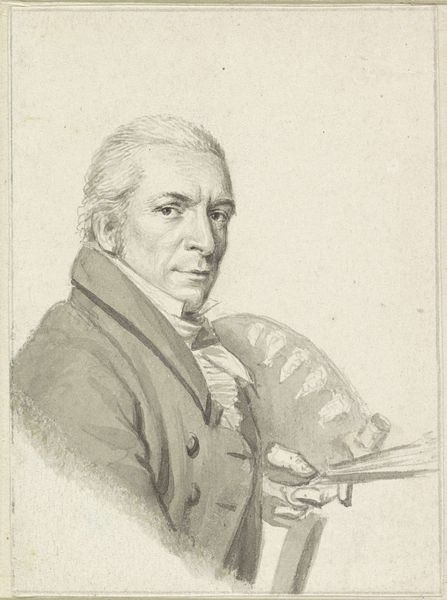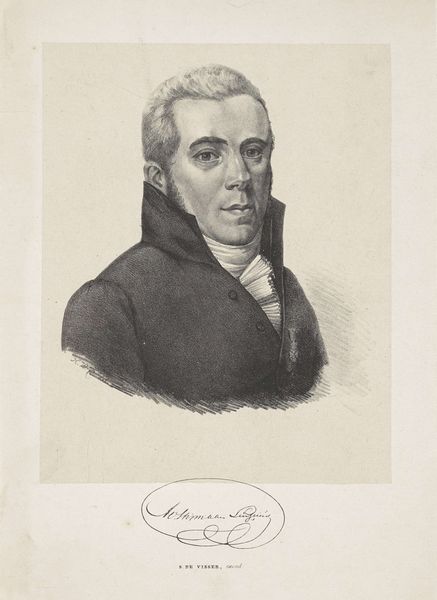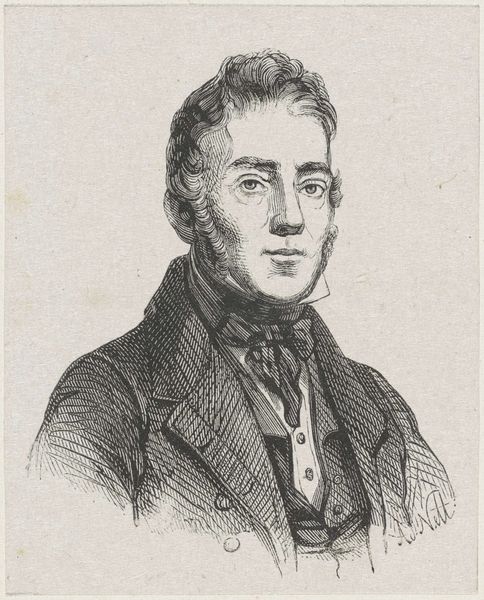
Copyright: Public domain
Curator: Looking at this piece, I'm immediately struck by its melancholic quality. It's a bit somber, isn't it? Almost like a fading memory. Editor: This drawing, made around 1860 by Josef Kriehuber, presents Johann Emanuel Veith, a Bohemian Roman Catholic preacher. Kriehuber’s work provides a compelling lens through which to consider the sociopolitical roles occupied by religious figures in 19th-century Bohemia. Curator: Fascinating! The muted palette reinforces the impression of someone contemplative, perhaps even burdened. The clothing, simple yet formal, evokes duty and restraint. His direct gaze seems to hold both vulnerability and steadfast resolve. There's an aura about him of great conviction, I'd wager. Editor: Symbols are certainly present, even in their subtlety. Note the high collar – an iconographic indicator of a clergyman in that era – a signifier of status but also separation from the secular world. It echoes themes present in the Reformation itself: challenging hierarchies while still bound by religious expectations. Curator: The artist captured such complex details with simple charcoal and pen strokes. Consider the implications for Bohemia in 1860—religious reform movements were gaining traction and intertwining with nationalist sentiment. Could Veith represent an intellectual caught between faith, tradition, and social progress? Editor: Indeed, this portrayal captures a potent sense of psychological depth. Even in his expression, there is a quiet fortitude. The gaze returns the viewer’s observation with intelligence and careful consideration. Curator: It begs us to reflect on the weight of expectations placed on such individuals—to be both spiritual guides and representatives of complex power structures. His gentle sadness could indicate the challenge inherent to this role. Editor: Kriehuber's rendering transcends a mere likeness; it preserves cultural memory, asking us to reconsider legacies. Curator: Well, by placing Veith in conversation with historical and cultural contexts, the work provides a stark reminder of those complex intersections that shape the lives, roles, and legacies of prominent figures, like Veith. Editor: I agree completely, this piece inspires a richer, more meaningful engagement with a figure whose life reveals so much about the tensions of faith and societal expectations in Bohemia in the mid-19th century.
Comments
No comments
Be the first to comment and join the conversation on the ultimate creative platform.
